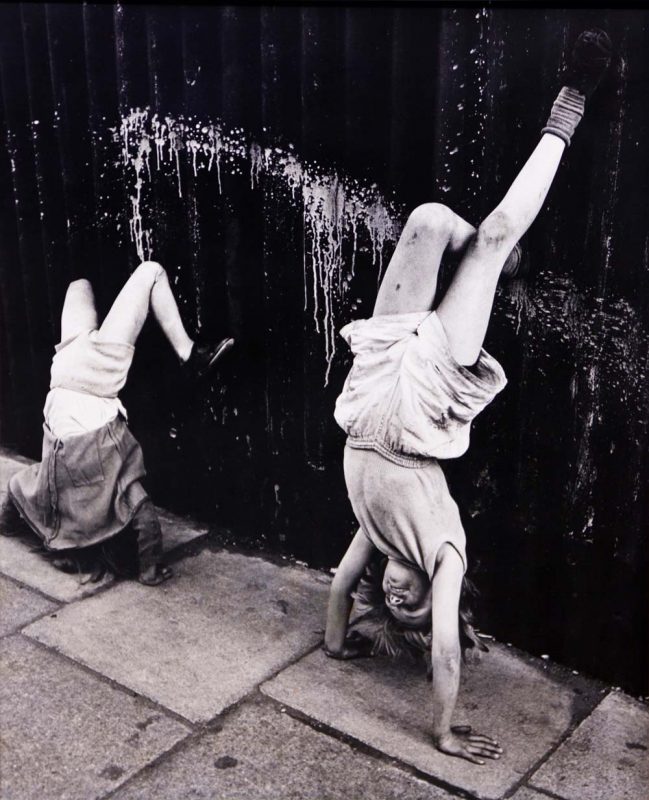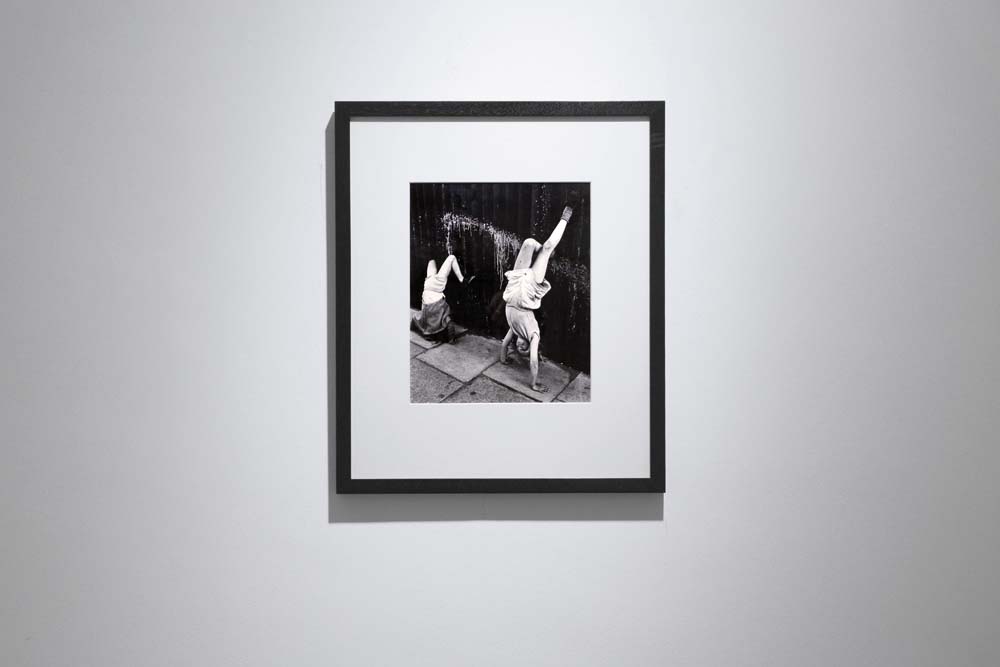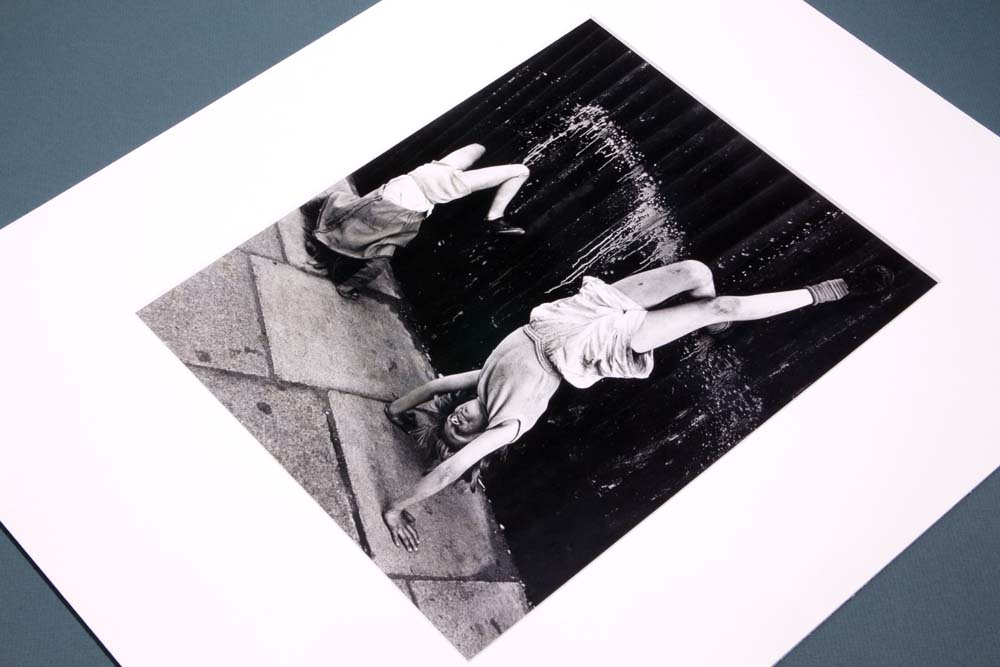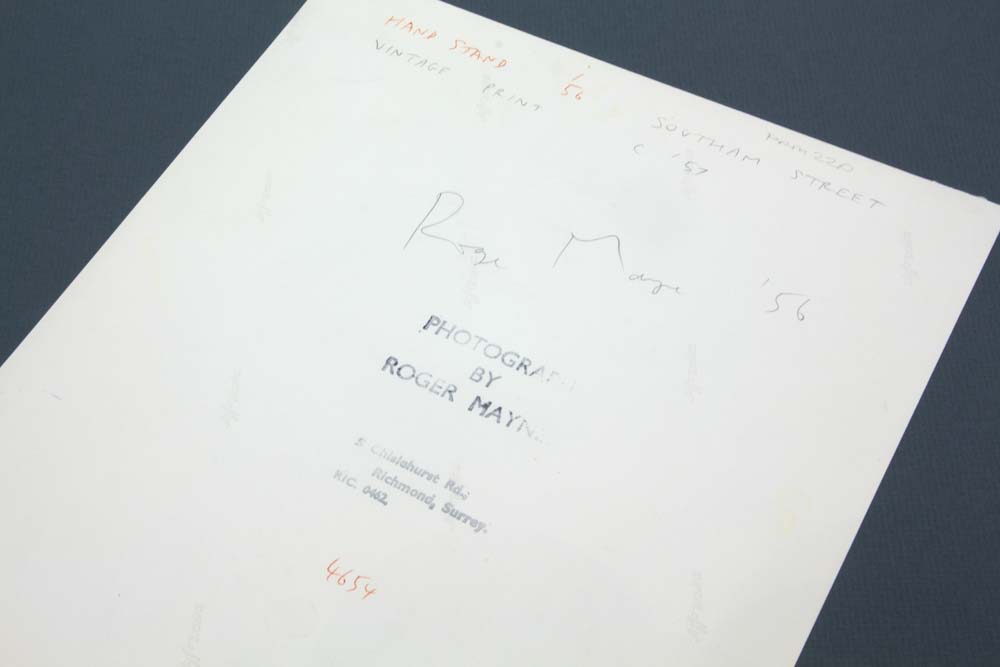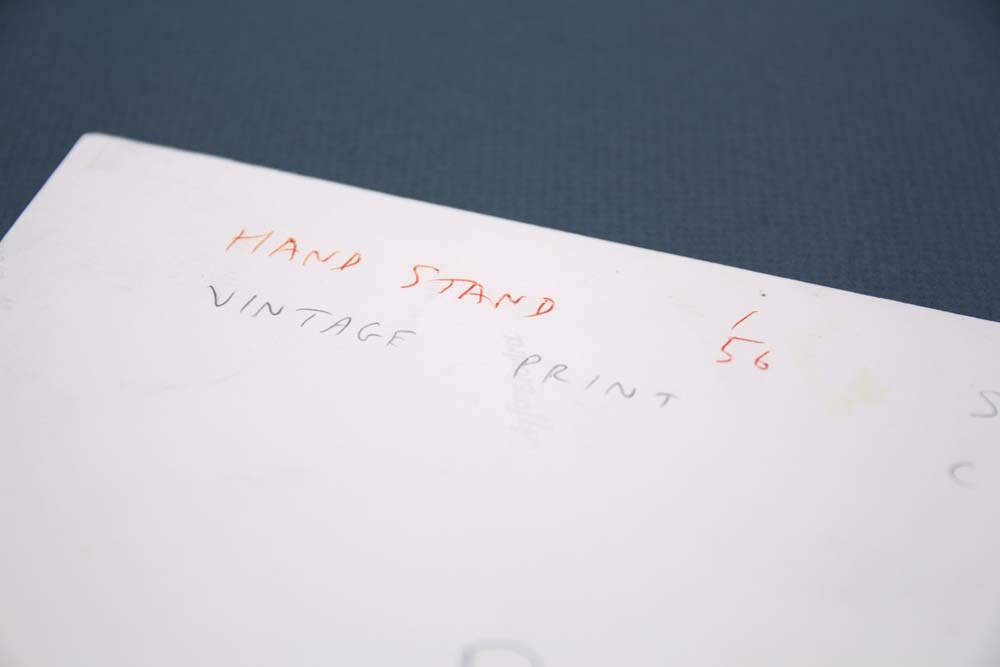Handstand, Southam Street, London, 1956
ROGER MAYNE
Signed, inscribed with title and date and stamped with photographer's copyright ink stamp on reverse
Silver gelatin print, printed c. 1957
12 x 10 inches

The images which Roger Mayne captured between 1956 and 1961 at Southam Street, London represent the most significant personal and professional project of his career. At that time, Southam Street in North Kensington had changed little since Victorian times and was later declared uninhabitable, making way for Erno Goldfinger’s Brutalist Trellick Tower in 1963. In Mayne’s influential works, the Southam Street residents, subsequently relocated to council housing, are captured over a period of five years. The images are now considered of national importance as documents of life in post-War, pre-gentrification Britain, and are held in the collection of the Victoria and Albert Museum in London.
In the early 1950s, Mayne became involved with the Combined Societies group and, together with photographer Hugo van Wadenoyen, organised international exhibitions including contemporary photographic work from Europe, the United States and Britain. The group had formed as a result of widespread disenchantment with the role of the Royal Photographic Society in Britain, and intended to promote a new and progressive style of photography, taking its cue from the aesthetics of Henri Cartier-Bresson and Paul Strand. The group not only afforded Mayne a greater freedom in his work, but also earned him international recognition, with Edward Steichen acquiring a number of his prints for the permanent collection of the Museum of Modern Art, New York in 1956.
For his work in Southam Street, Mayne worked closely with the pioneering sociologists Peter and Iona Opie, and took a particular interest in documenting the social dynamics that developed between the young people he photographed. Of the 1,400 negatives which Mayne produced between 1956 and 1961, the present work is one of the best-known, and most characteristic, views of children at play. The relationships that he witnessed on the terraced street were in contrast with those he felt characterised his own upbringing. Mayne was sent away to board at Rugby School from a very young age, before going on to study chemistry at Oxford University. For Mayne, images such as the present work evoked a longing ‘for the kind of childhood [he] didn’t have’.
Retrospectively, Mayne’s work has been largely understood as a part of a wider sociological trend in post-War photography, but critics have also noted his aspiration towards humanist as opposed to political art. His dynamic compositions, which often captured his subjects mid-movement, are objectively observed, reflecting the truth of day-to-day life for the young Southam Street residents.
The images are now considered of national importance as documents of life in post-War, pre-gentrification Britain, and are held in the collection of the Victoria and Albert Museum in London.
Works from the series quickly gained exposure in contemporary visual culture in the pages of The Sunday Times, the Observer, Vogue and Queen. The series was also used to illustrate articles on class and youth in the Universities and Left Review, and provided the covers to several Penguin studies of poverty, class and youth and Colin MacInnes’s seminal Absolute Beginners (1959).
The majority of the collector’s market for Roger Mayne’s prints centres around later prints, made during the 1990s and 2000s. This particular print is unusual. It is remarkable for being a large, vintage print of this celebrated picture, made around the time of the image itself.
